Digital Poster
Novel Techniques in CMR
ISMRM & ISMRT Annual Meeting & Exhibition • 10-15 May 2025 • Honolulu, Hawai'i

 |
Computer Number: 1
3657. Reducing
Bright Streaking Artefacts in SMS Free-Breathing MoCo LGE
Imaging Using a Novel Center-Out k-Space Reordering with Fat
Saturation
G. Kowalik, K. Kunze, F. Bosio, P. Speier, D. Staeb, R.
Razavi, A. Chiribiri, S. Roujol
King's College London, London, United Kingdom
Impact: The novel block-based centric k-space reordering
suitable for SMS bSSFP acquisitions enables efficient
utilization of pre-pulses i.e. fat suppression. The
presented work was done for LGE imaging; however, it can be
applied in other cases that utilize SMS bSSFP sequences.
|
|
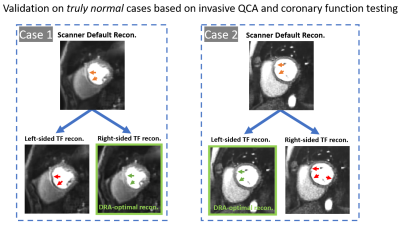 |
Computer Number: 2
3658. Deep-learning-enabled
Approach to Automatically Eliminate Motion-induced Dark-rim
Artifacts in Stress First-pass Perfusion CMRI
H. B. Unal, K. Youssef, A. Ahmed, K. Chow, X. Bi, L.
Zamudio, D. M. Yalcinkaya, R. Mastouri, J. Wei, C. N.
Bairey-Merz, R. Dharmakumar, B. Sharif
Purdue University, Indianapolis, United States
Impact: Proposed approach offers an effective solution
to eliminate DRA in first-pass perfusion CMRI. It helps
improving the diagnostic accuracy of visual and quantitative
methods, and the inline implementation can easily be
deployed in routine clinical studies with standard CMRI
protocols.
|
|
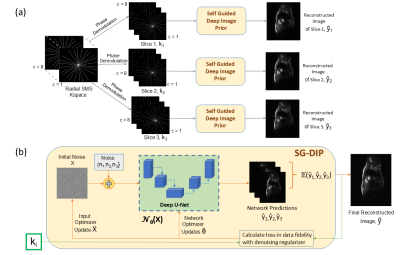 |
Computer Number: 3
3659. Reconstruction
of radial simultaneous multi-slice myocardial perfusion data
with self-guided deep image prior
M. A. Istiak, J. Le, J. Mendes, A. Arai, R. Ranjan, E.
DiBella, R-R Chen, G. Adluru
University of Utah, Salt Lake City, United States
Impact: The
promising results will enable consistent image quality
across all time frames, even in the presence of large
respiratory and cardiac motion within the dynamic sequence.
This will allow for improved visual diagnosis as well as
myocardial blood flow quantification.
|
|
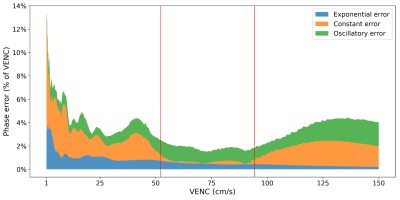 |
Computer Number: 4
3660. Evaluation
of background phase errors from eddy currents and mechanical
oscillations in phase contrast magnetic resonance imaging
S. Thalén, M. Loecher, D. Ennis
Stanford University, Stanford, United States
Impact: The necessary correction for background phase
errors depends on the VENCs, which explains why errors are
protocol dependent.
|
|
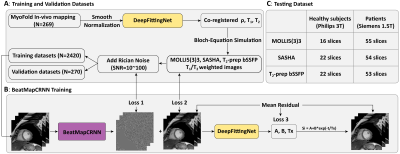 |
Computer Number: 5
3661. Improved
image quality in the Beat Mapping using a Convolutional
Recurrent Neural Network (BeatMapCRNN)
X. Qian, A. Wang, Y. Fan, B. Liu, Y. Jin, X. Kong, P. Wu, H.
Ding, R. Guo
Shool of Medical Technology, Beijing Institute of Technology, Beijing, China
Impact:
This study developed a convolutional recurrent neural network to alleviate noise artifacts in cardiac T1 and T2 mapping. Validation indicated that the proposed method could improve map quality for most used T1/T2 sequences without compromising accuracy or blurring lesions. |
|
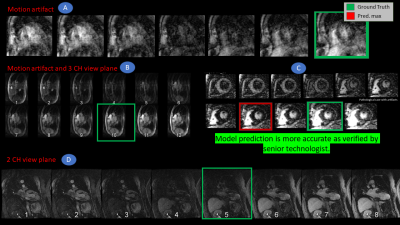 |
Computer Number: 6
3662. Inter-Frame
distance metric-based Auto-Inversion-Time prediction for Cardiac
MR
S. Banerjee, S. Chatterjee, G. Delso, S. Rajamani, M.
Janich, D. Shanbhag
GE HealthCare, Bengaluru, India
Impact: Abstraction of time-series based TI scout data
to a metric space and consequent Auto-TI prediction offers
resilience to artifacts with a smaller footprint model,
reduces training data variety needs, and offers
explainability for prediction
|
|
 |
Computer Number: 7
3663. Phase-dependent
variation in cardiac metabolism assessed with hyperpolarized
[1-13C]pyruvate
S-H Lin, C. Mozingo, C. Harrison, K. Derner, Z. Erfani, C.
Malloy, J. M. Park
UT Southwestern Medical Center, Dallas, United States
Impact: By utilizing structural Cine images alongside
heart rate records, a retrospectively reconstructing
algorithm was developed for restoring the ideal input
function despite the cardiac phases. This method enhanced
the precision of cardiac MRS in HP MRI.
|
|
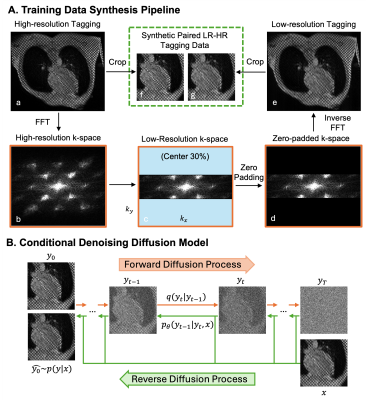 |
Computer Number: 8
3664. Super-Resolution
Cardiac MR Tagging Using a Cascaded Conditional Diffusion-Based
Generative Model
C. Sun, C. Thornburgh, N. Goyal, S. Kumar, R. Botnar, T.
Altes
University of Missouri-Columbia, Columbia, United States
Impact: TagGen enables 10-fold accelerated, high-quality
cardiac MR tagging, making accurate myocardial deformation
assessment feasible within clinical workflows with greatly
reduced scan time. This advancement broadens MR tagging
accessibility and may enhance the detection of subtle heart
motion abnormalities.
|
|
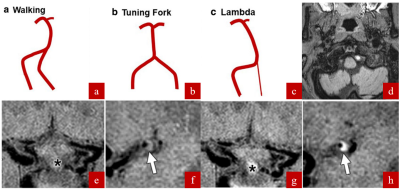 |
Computer Number: 9
3665. Additive
effects of vertebral artery geometry deformation on VBA plaque
vulnerability in hypertension: an HR-VWI study
J. Xia, C. Zhang, L. Mei, J. Lyu, X. Qu
the Second Hospital of Dalian Medical University, Dalian, China
Impact: Our findings concerning the additive effects of
vertebral artery geometry deformation on vulnerable plaques
in the basilar artery of hypertensive patients provide a
basis for improved clinical management and comorbidity
treatment strategies.
|
|
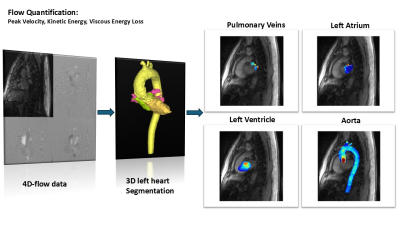 |
Computer Number: 10
3666. Preliminary
findings from 4D-flow MRI on left heart hemodynamics in Chronic
Obstructive Pulmonary Disease: The SPIROMICS Heart Failure Study
M. Shafeghat, D. Dushfunian, M. Markl, T. Houston, O.
Wieben2, M. R. Prince, W. Shen, D. Bluemke, K. L. Buschur,
M. C. Backman, S. R. Jambawalikar, B. Ambale Venkatesh, J.
Lima, P. Agarwal, M. Han, S. Lloyd, J. P. Finn, I.
Barjaktarevic, C. B. Cooper, J. Liu, J. Schroeder, R. Pain,
D. W. Kitzman, J. Vogel-Claussen, R. G. Barr, J. Carr
Northwestern University Feinberg School of Medicine, Chicago, United States
Impact: Our findings emphasized using 4D-flow MRI as a
noninvasive method for evaluating heart function in COPD
patients. This opens new research into therapies targeting
heart-lung interactions, improving outcomes that were
previously unattainable.
|
|
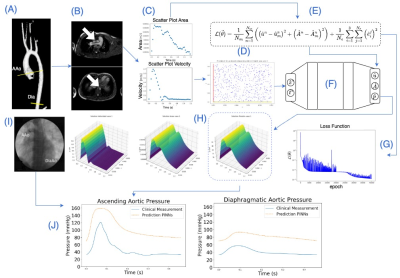 |
Computer Number: 11
3667. Prediction
of peak-to-peak pressure gradient in patients with aortic
coarctation using PINNs from Magnetic Resonance Images
S. Jara, F. Galarce, H. Mella, R. Ñanculef, R. Salas, F.
Sahli, P. Beerbaum, H. Grotenhuis, D. Marlevi, I. Valverde,
S. Uribe, J. Sotelo
Universidad Técnica Federico Santa María, Valparaíso, Chile
Impact: This methodology demonstrates the potential of
using PINN as a noninvasive alternative to catheterization
to predict PGpp in patients with coarctation of the aorta.
This method could significantly reduce the need for invasive
procedures in the management of patients.
|
|
 |
Computer Number: 12
3668. How
Low is Too Low? Optimizing VENC in 4D Flow MRI for the Portal
Venous System
T. Naren, T. Oechtering, K. Johnson, S. Reeder, O. Wieben
University of Wisconsin-Madison, Madison, United States
Impact: Knowledge of optimal venc for portal venous
acquisitions will reduce the need for velocity scout images
for 4D flow acquisitions. Additionally, phase unwrapping may
also facilitate analysis of higher velocity flow in the
hepatic artery from the same datasets.
|
|
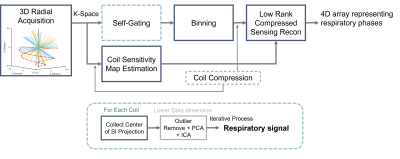 |
Computer Number: 13
3669. Improving
Coronary Assessment in 3D Radial Cardiac MRI Using Self-Gating
with K-Space Center Filtering, Motion Binning, and CS
Reconstruction
M. Tagliabue, A. Mackowiak, L. Feng, E. Peper, J.
Bastiaansen
Department of Diagnostic, Interventional and Pediatric Radiology (DIPR), Inselspital, Bern University Hospital, University of Bern, Bern, Switzerland
Impact: This work presents an approach for automatic
respiratory motion detection and binning that improves
motion compensation of whole-heart images. It provides
sharper visualization of the coronaries compared with
conventional methods, potentially aiding clinicians in more
reliable diagnosis of coronary disease.
|
|
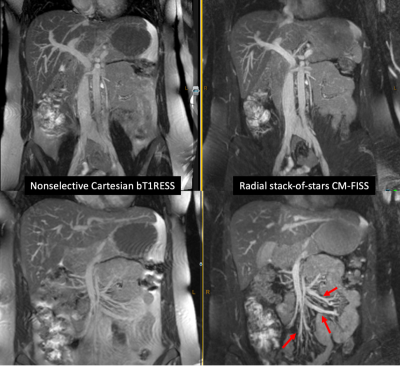 |
Computer Number: 14
3670. Equilibrium
Phase Contrast-Enhanced MRA: Comparison of Novel Cartesian
bT1RESS and Stack-of-Stars CM-FISS Imaging Strategies
R. Edelman, T. Wallace, R. Zi, I. Koktzoglou
NorthShore University HealthSystem, Evanston, United States
Impact: Equilibrium phase contrast-enhanced MRA using
bT1RESS is a recently described paradigm-shifting approach
for vascular imaging. As a potential alternative to
Cartesian bT1RESS, we implemented a radial stack-of-stars
CM-FISS technique which provides improved fat suppression
and reduced motion sensitivity.
|
|
 |
Computer Number: 15
3671. Respiratory
motion-corrected model-based 3D water-fat MRA at 0.55T
R. Stoll, C. Kolbitsch, M. Nickel, M. Schmidt, T. Schäffter,
D. Giese
Technical University Berlin, Berlin, Germany
Impact: An MRA at 0.55T covering the entire thorax,
allowing water/fat separation without navigator artefacts
can be achieved in a predictable time of 5 minutes.
|
|
 |
Computer Number: 16
3672. Gadolinium-based
contrast agent and stimulated echo acquisition mode cardiac
diffusion-weighted imaging: preliminary results
S. Tsuneta, S. Aono, J. Kwon, M. Yoneyama, H. Uehara, T.
Aoike, S. Takenaka, H. Koyano, N. Fujima, T. Nagai, T. Anzai,
K. Minowa, K. Kudo
Hokkaido University Hospital, Sapporo, Japan
Impact: Although the signal intensity of stimulated echo
acquisition mode (STEAM) and the precision of apparent
diffusion coefficient (ADC) were reduced with
gadolinium-based contrast agent (Gd), STEAM
diffusion-weighted imaging after Gd injection might be
feasible regarding the calculation of mean ADC.
|
The International Society for Magnetic Resonance in Medicine is accredited by the Accreditation Council for Continuing Medical Education to provide continuing medical education for physicians.